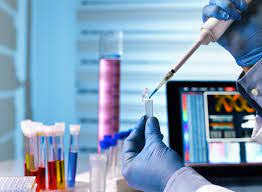Regenerative Medicine is a field of science that aims to replace human and animal cells and tissues with new ones. This technique can be used to repair or replace an entire organ. It is particularly effective in treating diseases like diabetes and cancer. Regenerative medicine is not an exact science, but it has some interesting implications for future medical practice.
One of the advantages of regenerative medicine is that it can get patients back to normal activities quickly. PRP therapy, for example, can be performed as an outpatient procedure. Although the procedure can cause some minor discomfort, most patients are able to return to work or school immediately afterward. The bruising and swelling will go away after a couple of days. Regenerative medicine has the potential to provide relief from chronic conditions, including arthritis, and can enable patients to get back to their normal lives without surgery. You may find more information at Regenerative Medicine Near Me
R egenerative medicine uses cells or tissue cultured from patients’ own fat or bone marrow. These cells are then processed using a centrifuge machine and injected into the damaged area of the body. The injected stem cells will develop into healthy spinal disc cells and repair the damaged disc. Regenerative medicine is a promising technique that will revolutionize the treatment of disease.
egenerative medicine uses cells or tissue cultured from patients’ own fat or bone marrow. These cells are then processed using a centrifuge machine and injected into the damaged area of the body. The injected stem cells will develop into healthy spinal disc cells and repair the damaged disc. Regenerative medicine is a promising technique that will revolutionize the treatment of disease.
Although the process may be expensive, gene transfection and other techniques may enable the production of regenerative medicines on a large scale. These techniques can help to enhance the properties of human cells and may help to overcome the regulatory hurdles associated with the production of these treatments. Moreover, the ability to produce and sell cells on a large scale will enable regenerative medicine to become routine.
Regenerative medicine is a relatively new field of medicine. However, its potential is vast. New discoveries are making it possible to develop better treatments for many patients. Some of the major areas of regenerative medicine include tissue engineering and cell therapy. The development of regenerative medicine depends on understanding molecular mechanisms.
Regenerative orthopedics can help relieve pain associated with the musculoskeletal system and improve the healing process of orthopedic conditions. Most musculoskeletal tissues are not capable of healing themselves, so regenerative medicine can speed up the healing process after orthopedic surgery. During this process, the patient’s own body tissue or donated tissues will be used to replace damaged tissues.
The field of regenerative medicine is interdisciplinary and involves both life science and engineering principles. It aims to treat and restore damaged tissues or whole organs. Commercial regenerative medicine therapies have been created and are being tested in preclinical and clinical settings. Although it is still early days, there is promising progress in many fields, including wound healing and organ transplantation.
Induced pluripotent stem cells are an important component of regenerative medicine. They can be programmed to be any type of tissue in the body. Another important aspect of induced pluripotent stem cells is that they can be used as autologous cells for repair. This approach avoids immune rejection issues and ethical considerations associated with the destruction of human embryos. In addition, induced pluripotent stem cells can serve as novel models for human disease.
